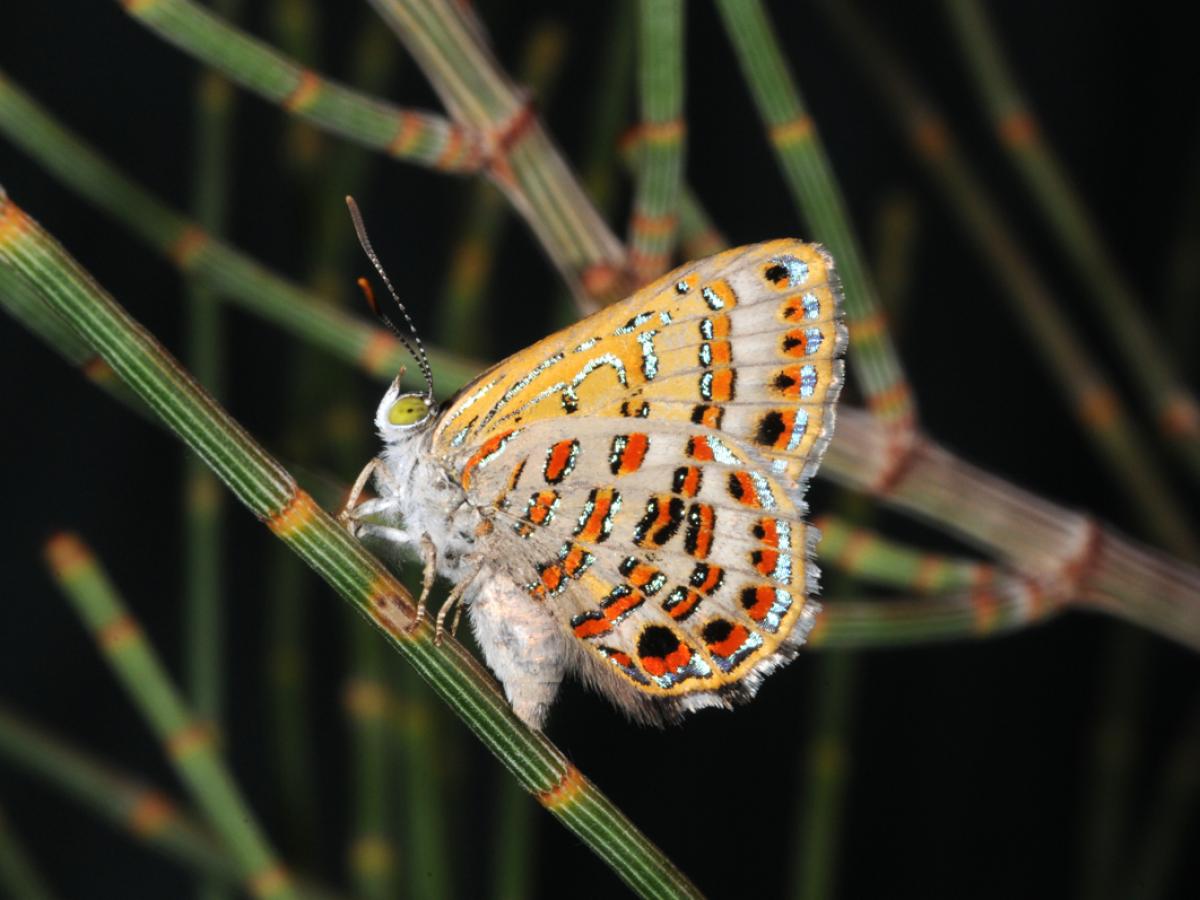A new study estimates that more than 9000 insects and other native invertebrates have become extinct in Australia since European arrival in 1788 and between 1-3 additional species become extinct every week.

The Bulloak Jewel butterfly is estimated to have a 37 per cent likelihood of becoming extinct by 2040 unless there is new action to conserve it. It lives in Queensland's Bulloak Woodlands which have been widely cleared. Photo credit: Michael Braby, Australian National University.
Invertebrates include species such as worms, snails and spiders, and many play a crucial role in the environment - such as pollinators and earthworms, which are important for maintaining soil health.
Dr Jess Marsh, from the University of Adelaide's School of Biological Sciences, contributed to the study and says we should not accept the ongoing species loss as inevitable.
"Thousands of invertebrate species remain at high risk of extinction, and many have already lost, and continue to lose, a huge amount of habitat," says Dr Marsh, whose study was published in the journal Cambridge Prisms: Extinction.
"There is a lot we can do to prevent extinctions, including by protecting important habitats and reducing threats like pesticide use.
"Using pesticide in your garden often kills the beneficial invertebrates your garden need, like bees and flies that pollinate, lady beetles that help control aphids, and worms that improve your soil."
Most at risk are invertebrate species that require special habitats, or which only occur in specific areas of the country.
"The golden sun moth occurs in south-eastern Australian grasslands, and even though little of the once vast grasslands remain, they are still at high risk of being destroyed by developments," says Dr Marsh, who is a Biodiversity Council member.
"And climate change will further exacerbate risks for such species."
Dr Marsh, who is a member of the Australian Biodiversity Council, conducted the study as part of a national team that included 10 scientists from universities, museums and state governments.

The Kangaroo Island Enigma Moth is an ancient relict, the only member of its family known to still be in existence and only known from a small area on Kangaroo Island. Credit: George Gibbs.
The study was led by Professor John Woinarski, from Charles Darwin University, who suggests the number of species to have gone extinct in Australia since European arrival is likely much higher than the research found.
"We found that 9,111 species are likely to have become extinct in those 236 years. Allowing for uncertainties and knowledge gaps, our analysis indicates that the true number is at least 1500 species and possibly up to 60,000 extinctions," says Professor Woinarski, who is also a Biodiversity Council member.
Professor Woinarski says only one of these extinctions has been formally recognised under Australian environmental legislation, that of the Lake Pedder earthworm, and many occurred before the species were named or described by scientists.
"Despite their incredible importance, there has been a long running bias against invertebrates, with little funding available for their research and conservation," says Professor Woinarski.
"It is important that Australia's federal and state and territory governments, and the community, give much greater priority to understanding, monitoring and protecting our invertebrates.
"Invertebrates are the foundation of all healthy environments and a livable planet. As we lose invertebrates the health of our crops, waterways, forests and even local parks and backyard gardens will decline."
The Biodiversity Council called the finding highly alarming and echoes Professor Woinarski's call for federal state and territory governments to increase work to understand, monitor and conserve Australia's invertebrates.






